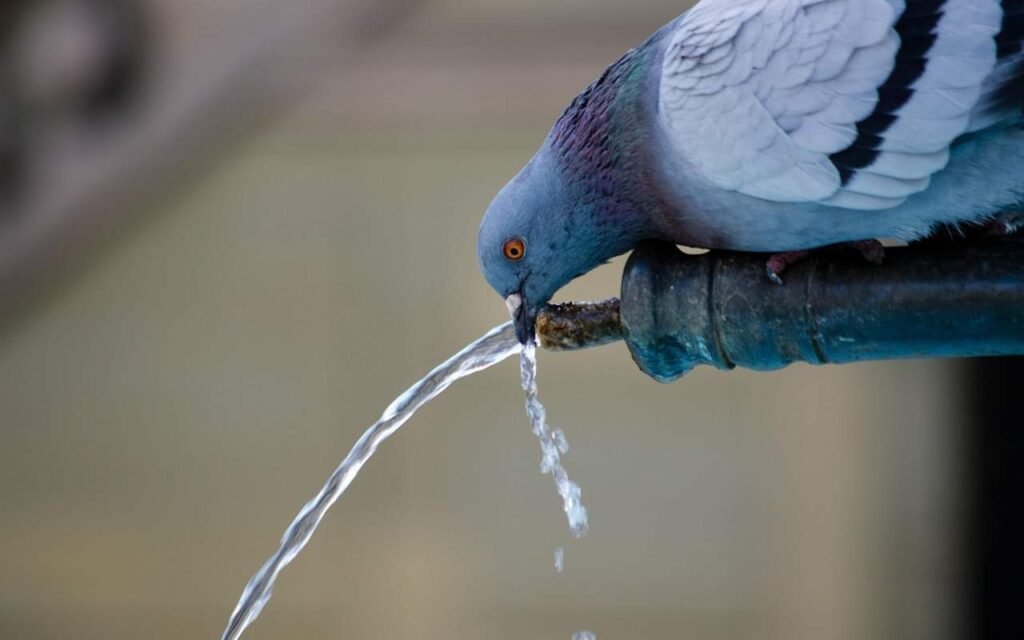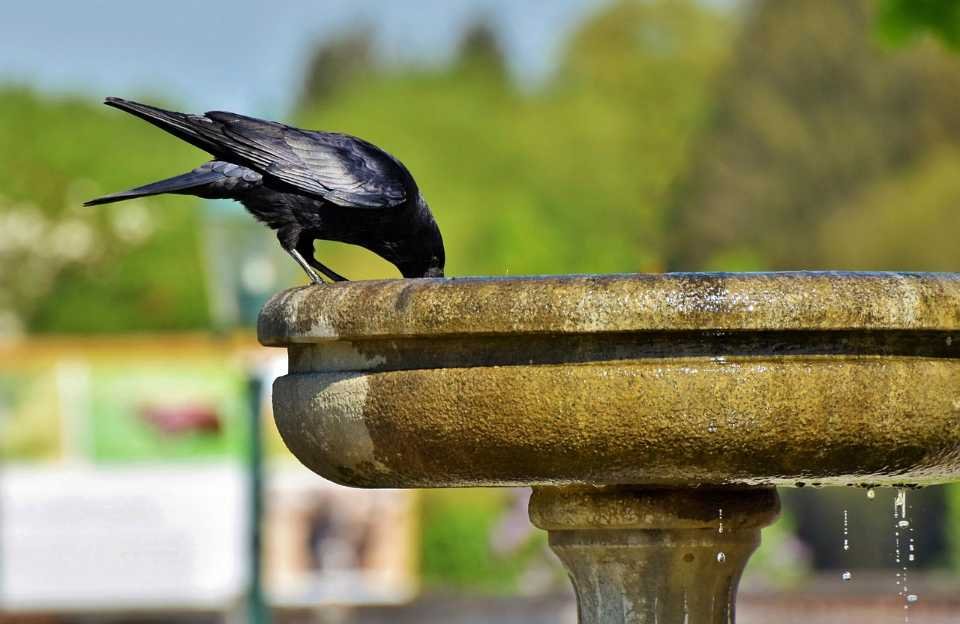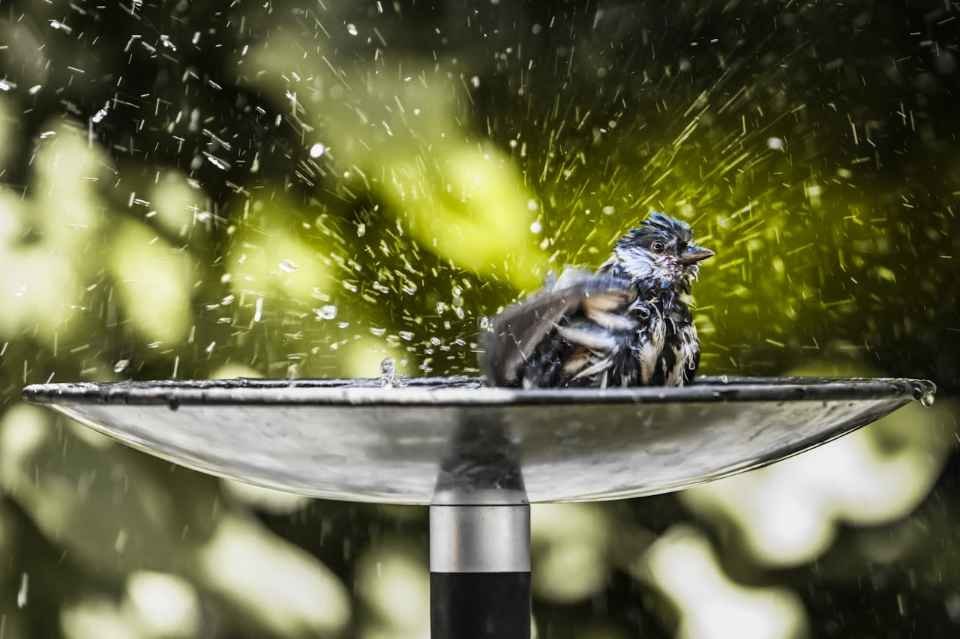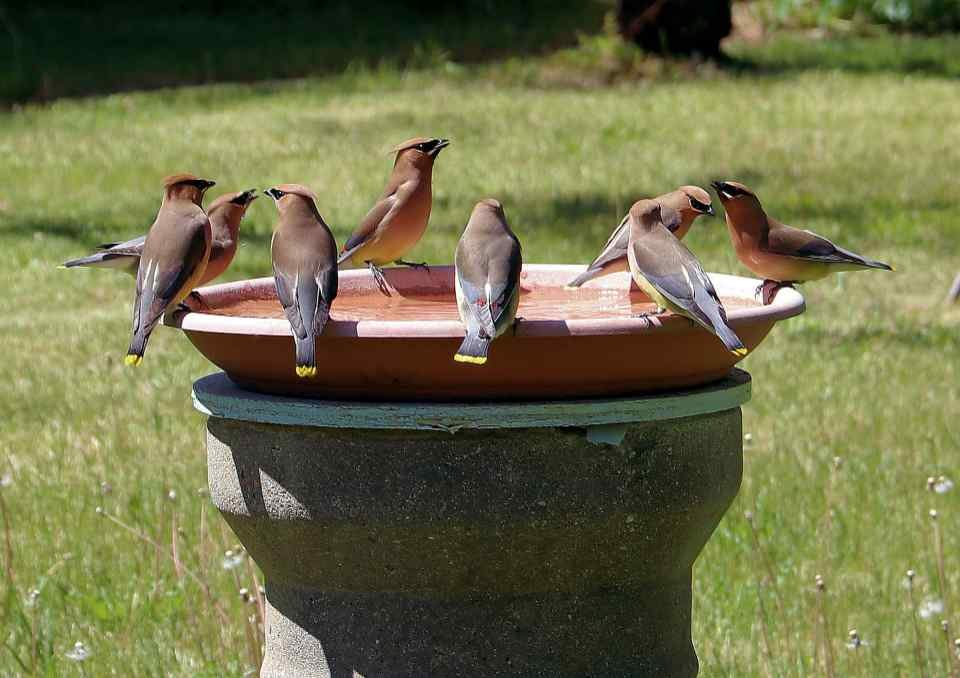Your backyard birds are panting in the shade while you’re cranking up the AC 🥵, and that shallow dish of water you put out last spring probably isn’t cutting it. Spoiler alert: it’s not. Summer bird hydration requires more strategy than tossing a bowl outside and hoping for the best.
If you’re wondering how to keep birds hydrated during summer, you’re about to learn practical tips I discovered the hard way, like the time a cardinal nearly collapsed at my pathetic excuse for a birdbath during last summer’s heat wave. Time to step up our game.
Why Summer Hydration Becomes Critical for Birds
Water needs for birds skyrocket during hot weather, but their options for finding it shrink dramatically. Natural water sources dry up, shallow puddles evaporate within hours, and birds must work harder to stay cool.
Birds can’t sweat like humans do. Instead, they pant and hold their wings away from their bodies to release heat. This cooling process requires significant water intake to prevent dehydration and overheating, according to the Audubon Society, which notes panting and wing-lifting as key ways birds regulate body temperature during extreme heat.
Small songbirds face the biggest challenges because their higher metabolic rates mean they dehydrate faster than larger species. A tiny chickadee can become dangerously dehydrated within hours during extreme heat (Audubon).
Summer also coincides with breeding and nesting seasons for many species. Parent birds working overtime to feed hungry chicks need constant hydration to maintain their energy levels and milk production.
Ever notice how quiet your yard gets during the hottest part of summer days? Those birds aren’t just being lazy, they’re conserving energy and seeking whatever water sources they can find.
Essential Water Sources That Actually Work
Effective bird hydration goes way beyond the traditional ceramic birdbath sitting in full sun. Modern bird lovers need multiple water stations with different features to attract various species.
Traditional Birdbaths with Strategic Upgrades
Shallow depth remains crucial for small birds who can drown in deeper water. Keep water levels at 1-2 inches maximum, with graduated depths for different bird sizes.
Rough surfaces on the bottom provide grip for bathing birds. I learned this when watching finches slip and slide on my smooth ceramic bath like they were at a water park :/
Shade positioning makes water sources infinitely more attractive during hot weather. Birds prefer drinking from cool water rather than sun-heated liquid that feels like tea.
Daily refilling becomes non-negotiable during summer heat. According to the BirdWatching Daily, stagnant water breeds bacteria and mosquitoes while losing its appeal to thirsty birds.
Moving Water Features
Dripping water attracts birds from surprising distances. The sound acts like a dinner bell, calling species you never knew lived in your neighborhood.
Solar fountains create continuous water movement without electrical installation. These units keep water circulating, prevent mosquito breeding, and add visual appeal to your yard.
Misting systems provide drinking opportunities while creating cooling zones where birds can regulate body temperature through evaporative cooling.
Shallow streams or water features with gentle flow patterns accommodate ground-feeding species like robins and thrushes that prefer running water.
Strategic Placement for Maximum Bird Traffic
Location determines success more than the type of water feature you install. I’ve moved the same fountain three times and seen completely different bird activity at each spot.
Safety Considerations
Near cover but not too close gives birds quick escape routes from predators while preventing cats from using dense shrubs as hunting blinds.
Multiple sight lines allow nervous birds to scan for threats while drinking. Position water sources where birds can see approaching dangers from several directions.
Ground-level and elevated options cater to different species preferences. Robins love ground-level water, while chickadees prefer elevated sources.
Environmental Factors
Morning sun, afternoon shade provides ideal conditions throughout the day. Water stays fresh longer and birds appreciate cooler drinking temperatures during peak heat.
Wind protection prevents rapid evaporation and keeps water from splashing out during breezy conditions.
Easy human access for cleaning and refilling ensures you’ll actually maintain the water source consistently.
FYI, placing water near existing bird feeders creates comprehensive bird habitat that keeps species in your yard longer.
Innovative Hydration Solutions for Extreme Heat
Creative water delivery becomes necessary when temperatures soar above normal ranges. Traditional methods can’t keep up with increased bird demand during heat waves.
Automatic Refill Systems
Gravity-fed systems using inverted bottles or jugs provide continuous water replenishment without daily monitoring.
Timer-controlled systems connected to garden hoses can refresh water sources multiple times daily, keeping temperatures cool and supplies constant.
Overflow systems prevent water from becoming stagnant while maintaining consistent levels throughout hot days.
Cooling Enhancement Techniques
Ice additions provide temporary temperature relief, though this requires careful timing to avoid shocking birds with extremely cold water.
Frozen water bottles placed near birdbaths create localized cooling zones without directly chilling the drinking water.
Shade structures over water sources keep temperatures manageable and reduce evaporation rates significantly.
Multi-Level Water Station Setup
Different bird species have varying water preferences and comfort levels. Creating multiple options accommodates diverse needs and increases overall bird activity.
Ground Level Solutions
Shallow dishes placed directly on the ground serve species like juncos, sparrows, and towhees that prefer terrestrial feeding and drinking habits.
Rock arrangements in shallow pans create varied depths and landing spots for different sized birds.
Drip irrigation systems can create small puddles and moist soil areas that attract ground-foraging species.
Mid-Level Options
Platform birdbaths at 2-3 feet height accommodate medium-sized birds while remaining accessible to smaller species.
Hanging water dishes provide options for birds that prefer elevated drinking stations with quick exit routes.
Branch-mounted containers mimic natural water collection points that birds instinctively seek.
Canopy Level Features
Tree-mounted misters create drinking and cooling opportunities for species that rarely visit ground-level water sources.
High platform baths serve larger birds and species comfortable at greater heights.
Maintenance and Cleanliness During Hot Weather
Water quality deteriorates rapidly in summer heat, making regular maintenance crucial for bird health and continued visitation.
Daily Maintenance Tasks
Complete water changes prevent bacterial buildup and remove debris that accumulates throughout active bird days.
Scrubbing containers removes algae and biofilm that develop quickly in warm, nutrient-rich water.
Refilling with cool water provides immediate relief for heat-stressed birds and maintains attractive water temperatures.
Weekly Deep Cleaning
Bleach solution cleaning (10% bleach, 90% water) kills harmful bacteria and prevents disease transmission among bird populations. For those who prefer chemical-free options, check out how to clean a bird bath without chemicals.
Thorough rinsing removes all cleaning residue that could harm visiting birds.
Equipment inspection identifies wear, damage, or inefficiencies that need addressing before they become problems.
Signs of Contamination
Green water indicates algae growth that makes water unpalatable and potentially harmful to birds.
Floating debris creates unsanitary conditions and suggests inadequate maintenance schedules.
Mosquito larvae in stagnant water pose health risks and indicate water isn’t being refreshed frequently enough.
Species-Specific Hydration Preferences
Different bird families have evolved distinct drinking behaviors and water source preferences. Understanding these differences helps create more effective hydration stations.
Small Songbirds
Chickadees and finches prefer shallow water with rough surfaces for secure footing during quick drinking sessions.
Wrens like secluded water sources near dense vegetation where they feel protected while drinking.
Hummingbirds need extremely shallow water or prefer misting systems that allow them to fly through water droplets.
Medium-Sized Species
Cardinals and jays use deeper water for both drinking and bathing, requiring sturdy containers that won’t tip.
Robins love ground-level water sources and enjoy splashing during bathing sessions.
Woodpeckers prefer dripping or moving water and often drink while clinging to vertical surfaces.
Larger Birds
Crows and ravens need substantial water volumes and prefer elevated sources with clear sight lines.
Doves drink differently than most birds, submerging their beaks and pumping water like mammals.
Emergency Hydration During Heat Waves
Extreme weather events require immediate action to prevent bird casualties in your yard. Standard water sources become inadequate during dangerous temperature spikes.
Crisis Response Measures
Multiple water stations spread throughout available space provide redundancy when demand peaks.
Frequent refilling every few hours keeps water temperatures manageable and supplies adequate.
Temporary shade creation using umbrellas, tarps, or portable structures protects both water and birds from direct sun.
Recognizing Heat Stress
Panting birds with open beaks need immediate access to cool water and shade.
Lethargic behavior or birds sitting motionless in shade indicates dangerous overheating.
Wing drooping and reduced activity levels suggest birds need cooling assistance immediately.
According to BirdWatching Daily, birds exposed to extreme heat can quickly become stressed or dehydrated, so having emergency protocols ready before heat waves hit makes the difference between helping birds survive versus watching them struggle.
Natural vs Artificial Water Source Integration
Combining natural and artificial hydration creates the most effective bird support system. Each approach offers unique advantages that complement the other.
Enhancing Natural Sources
Protecting existing puddles with shade or regular water additions extends their usefulness during dry periods.
Creating micro-habitats around natural water features attracts more species and extends usage.
Plant selection that catches and holds water provides additional hydration opportunities throughout your landscape.
Supplementing with Technology
Smart irrigation systems can maintain multiple water sources automatically during extended hot periods.
Weather-responsive features adjust water delivery based on temperature and humidity conditions.
Solar-powered systems provide sustainable operation without increasing utility costs.
Long-Term Summer Hydration Planning
Sustainable bird hydration requires thinking beyond quick fixes to create systems that work throughout summer heat waves and drought conditions.
Successful summer bird hydration isn’t just about preventing dehydration, it’s about creating an oasis that supports healthy bird communities through the most challenging season. When you see birds choosing your yard over others during brutal heat waves, you’ll know your hydration strategy is working perfectly.





